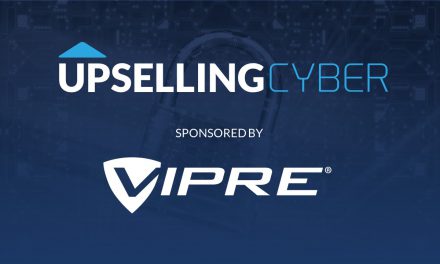Simplify Your Solution Design Process w/ These 3 Steps
Having your prospect buy into your value proposition and agree to receive a quote from you is a big win. This is when the conversation tends to turn from consultative to technical and the participation of a solution designer is imperative.
Even if your prospect only requests a quote for recurring service and doesn’t claim to have any significant project requests up-front, it is still important to do a full technical analysis of the company’s environment before providing them a quote. This is likely the value that you have already committed to delivering in your call-to-action, so no matter what marketing spin you put on it, it is important to always approach this process the same way for every prospect.
The primary purpose of analyzing the customer’s environment should be to compare it your best practices and create a documented plan for stabilization and future improvements. Whether you think this work will be approved or not, it is your obligation as an IT Provider to make recommendations and maintain a standard for your customers to follow. Planting this seed during the quoting process is the best way to show your prospect, not only what you can do but also what is expected of them as your customer.
Getting your Sales and Technical teams to collaborate during the sales process can be a constant struggle. It is hard to commit high level technical resources to a sales call when there is always some kind of technical emergency that could benefit from their brain power. Nevertheless, formalizing the process and holding firm on your scheduling of these resources (regardless of circumstance) is incredibly important.
For this reason, we developed a three step solution design process that streamlines the technical portion of the sales process and ensures that all involved are on the same page:
The Ultimate Guide To Cash Flow For Managed Services
Sponsored by Alternative Payments & Zest
Review business goals
It is important to remember that at the end of the day your customer is always in control. This is their business that they have put years of sweat equity into and thus their opinion trumps all. You need to make sure that you are always designing solutions to fit the goals of your customer and their future needs, not just outfitting them for the present. Openly discussing your prospect’s business goals will allow you to engineer an environment that not only solves their current problems, but also prevents future problems as well.
Your first step in the solution design process should always include the sales person, solution designer, and potential customer openly discussing the goals of the company. If the customer says that they would like to triple their revenue within the next 2 years, then prompt them to picture what their company will look like at that point. For example, how many new employees would they have hired? Do they need to move offices or add additional locations? All of these factors may require different solutions that can scale with the business and won’t need to be replaced as they grow.
At the same time, you may also have a prospect whose goals are focused on profit and not the growth of revenue. This might require a solution built for long term stability and cost-saving, but doesn’t necessarily need to scale. When you have a conversation about your potential customer’s business goals and then present them a solution that is custom fitted to their ambitions, you will find that these quotes are met with a receptive attitude. This is the first step in getting your potential customer to see you and your company as a business consultancy and not just a bunch of “IT guys.”
Design solution to stabilize
After your team has a complete understanding of your prospect’s business goals, your solution designer should first focus on creating a solution to stabilize the environment. First and foremost, this means resolving any obvious issues that have been causing downtime and productivity loss or mitigating any glaring security risks.
It is important to stress to the customer that this is essentially the bare minimum investment that you would require to take them on as a customer. If they do not agree to making a minimal investment to stabilize their environment then this is probably not a customer that you want to do business with. This could be an early sign of their future investment and it may be best to walk away.
At the same time, it is also important to avoid setting the bar too high and over-quoting your stabilization. While the prospect might need a significant amount of improvements to meet your standards, not every business will be able to make the investment all at once. The amount of work you require upfront will have a direct correlation to the acceptance probability of your quote. This is often a point of contention between sales/marketing and technical solution designers, so it’s important to find a happy medium where you can produce a winnable quote that will lead to a satisfied customer (that is also easy to support).
The Ultimate Guide To Cash Flow For Managed Services
Sponsored by Alternative Payments & Zest
Create milestones to meet standards
Included with your stabilization requirements should be a list of technology milestones (such as future upgrades) that need to be addressed. This list should primarily consist of best practice recommendations that are not urgent but are still considered somewhat mandatory based on the prospect’s business goals. Establishing these milestones early in the relationship will ensure that the customer is not caught off guard when this is brought up later on (when the upgrades become more urgent).
While including precise dates on milestones will instill a sense of urgency later on, it is important for your prospect to know that you are not holding them to this long term commitment as part of your initial quote. The last thing you want is for your attempt to be proactive to overwhelm the customer and prevent them from accepting the deal.
The process of documenting and presenting milestones will also act as an insurance policy in the event that these milestones are ignored and major issues occur as a result. While you can’t take an “I told you so” to the bank, this may be the difference between a customer being unhappy with you and your technical leadership or being unhappy with themselves and their unwillingness to follow it.

SPONSORED BY ZEST
















